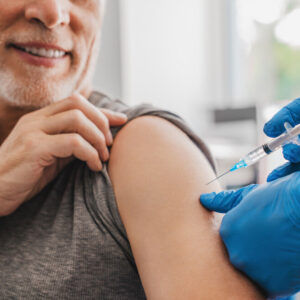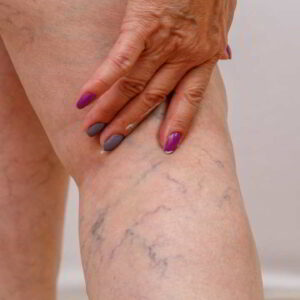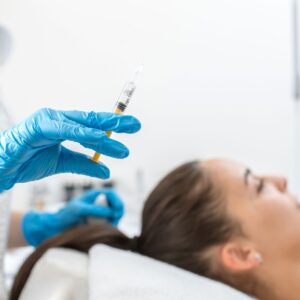Hair loss can feel like a slow fade of confidence. It creeps in over time—first a thinning part, then visible scalp, and before you know it, you’re constantly adjusting your hairstyle to hide it. While it’s a common concern, especially among adults, finding safe and effective regrowth methods is where the real challenge lies. Many people turn to quick fixes, but true results come from evidence-backed solutions. That’s why it’s important to explore only what a Hair Specialist Doctor In Dubai recommends.
Understanding the Root of Hair Loss
Before exploring solutions, it’s crucial to understand why hair loss happens in the first place. Genetics, hormonal shifts, stress, poor nutrition, and scalp conditions all play roles. Each cause demands a tailored treatment, and that’s where expert knowledge matters. Instead of falling for trends, a clinical evaluation can guide you to the safest regrowth path.
Scalp Health Optimization
Healthy hair starts with a healthy scalp. Build-up of oils, dead skin, and product residue can clog hair follicles and stifle growth. A good scalp care routine includes:
-
Gentle cleansing with pH-balanced shampoo
-
Weekly exfoliation to remove buildup
-
Hydrating scalp serums to support follicle health
These non-invasive practices are often the first step a Hair Specialist Doctor would recommend. They enhance absorption of active ingredients in other treatments and set the stage for thicker regrowth.
Low-Level Laser Therapy (LLLT)
Low-Level Laser Therapy is one of the safest modern methods to stimulate hair follicles without discomfort or recovery time. It uses red light at specific wavelengths to energize cells in the scalp, increasing blood circulation and promoting regrowth in thinning areas. LLLT devices are FDA-cleared and can be used at home or in clinical sessions. Consistency is key—results typically become visible after 3–6 months of regular use.
Nutritional Support for Stronger Strands
Hair follicles need consistent nutrients to stay active and healthy. Deficiencies in iron, biotin, zinc, or vitamin D can trigger shedding and thinning. Incorporating the following nutrients into your diet can naturally improve growth:
-
Protein: The building block of hair
-
Iron: Supports oxygen delivery to follicles
-
Omega-3 fatty acids: Nourish the scalp and reduce inflammation
-
Biotin and B-complex vitamins: Promote cell growth and strength
Supplements should only be used when needed and after confirming a deficiency through lab testing.
Topical Growth Boosters
Topical treatments such as minoxidil and peptides work by extending the anagen (growth) phase of hair follicles. They are safe when used correctly and are often part of long-term regrowth plans. Some formulations also include caffeine, saw palmetto, or rosemary oil—ingredients known for their anti-inflammatory and follicle-strengthening effects.
Daily application is essential for effectiveness. Results typically begin to show within four months. Discontinuing use may reverse gains, so a consistent routine is crucial.
Microneedling for Hair Regeneration
Microneedling isn’t just for skincare. When used on the scalp, it creates microchannels that improve blood flow and increase absorption of topical treatments. It stimulates collagen production and awakens dormant follicles. Microneedling sessions are minimally invasive, well-tolerated, and highly effective when combined with serums like growth factors or peptides.
This method is particularly helpful for individuals with early-stage thinning or patchy loss.
Stress Management Techniques
Stress doesn’t just affect your mood—it impacts your hair too. Chronic stress triggers hormonal imbalances that lead to shedding, especially a condition called telogen effluvium. To protect your hair, it’s essential to adopt stress-reduction habits such as:
-
Daily exercise or yoga
-
Deep breathing and meditation
-
Adequate sleep and hydration
-
Digital detoxes to reduce mental overload
While these lifestyle changes don’t regrow hair directly, they create an internal environment where hair can thrive.
Personalized Treatment Plans
No two individuals experience hair loss in exactly the same way. That’s why personalized treatment plans yield better results. These may include a mix of the methods above, adjusted to suit your specific type of hair loss, medical history, and lifestyle. A Hair Specialist Doctor tailors these combinations for maximum safety and long-term success.
Monitoring progress through regular evaluations ensures the plan stays effective and any necessary tweaks are made early.
What to Avoid: Unsafe Hair Regrowth Trends
It’s tempting to follow viral trends and miracle cures that promise overnight results. However, these often lack scientific support and can do more harm than good. Be wary of:
-
Harsh chemical products with unknown ingredients
-
DIY scalp treatments that damage the skin barrier
-
Overuse of heat styling tools
-
Unverified supplements with high doses
When in doubt, opt for evidence-backed treatments that prioritize your health.
Real Results Come with Time
Patience plays a key role in hair regrowth. Most safe methods work gradually over several months. Stay committed to your routine, track your progress, and focus on long-term health rather than immediate results. Remember, regaining hair is a journey—not a race.
Final Thoughts
The journey to restoring your hair doesn’t have to be risky or overwhelming. When you focus on what a Hair Specialist Doctor would recommend, you’re choosing treatments that are not only effective but also safe for your overall well-being. From improving scalp health and using low-level laser therapy to nutritional support and microneedling, each method plays a critical role in natural hair restoration. Avoid shortcuts and follow a plan rooted in science—because lasting results come from the right guidance and consistent effort.







